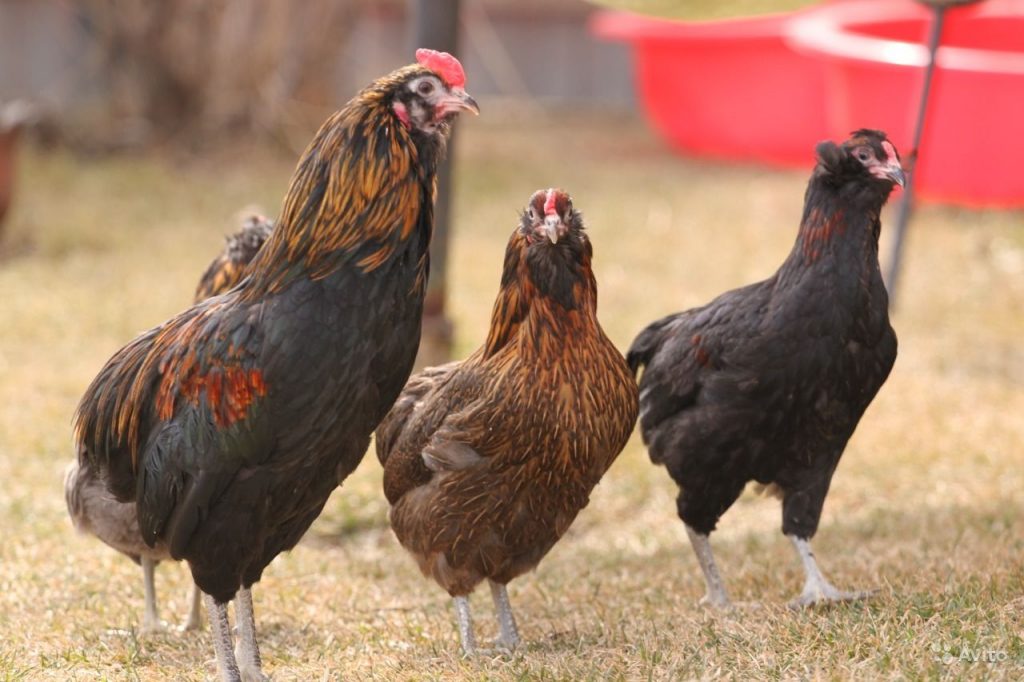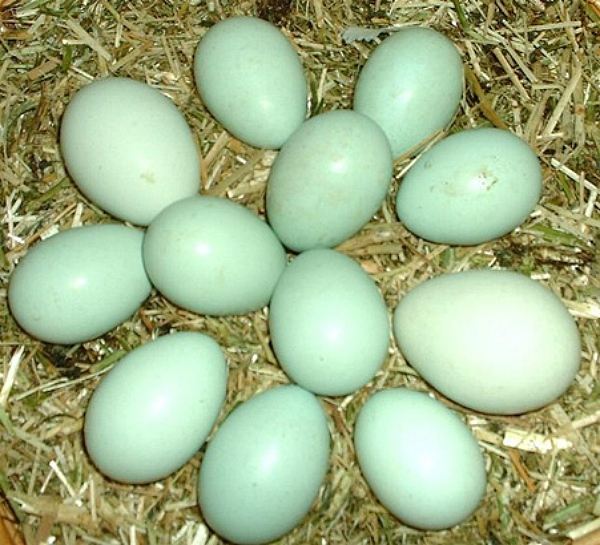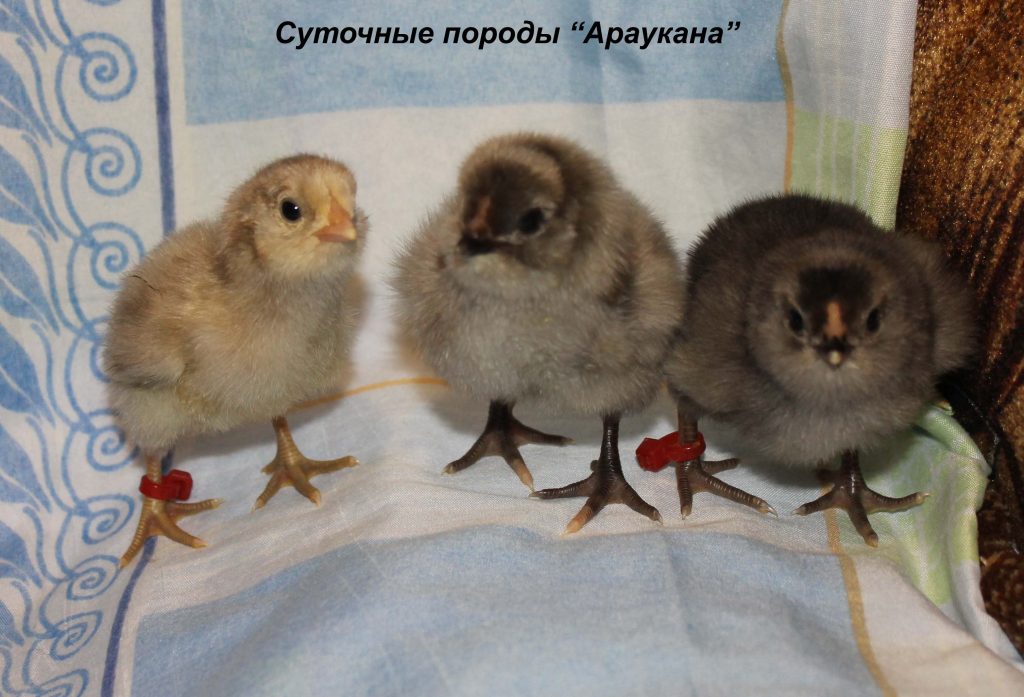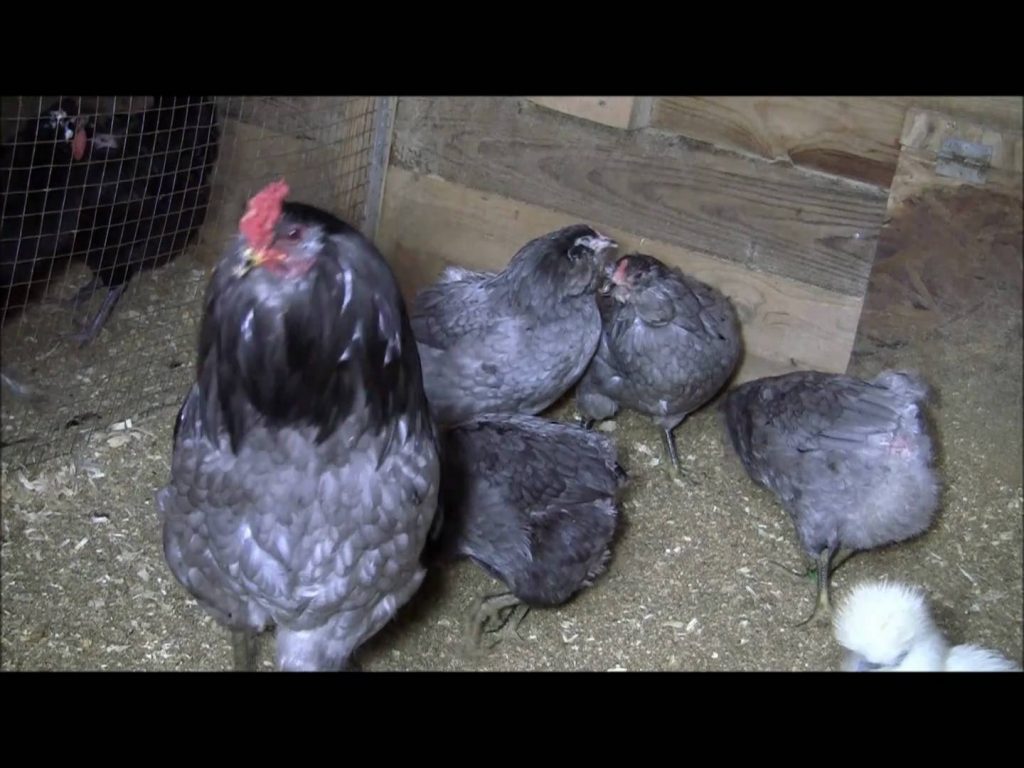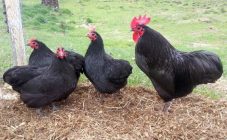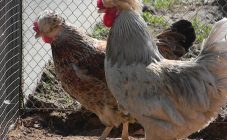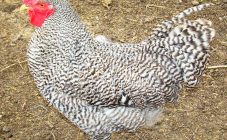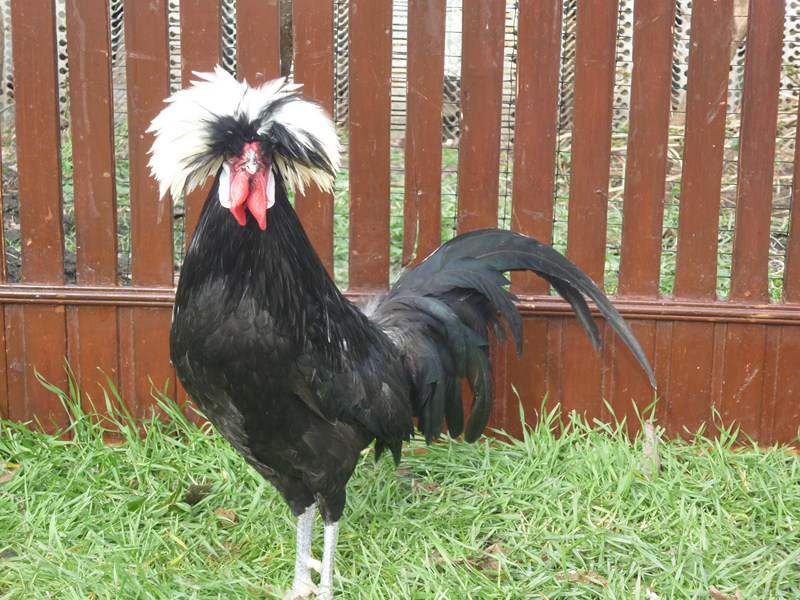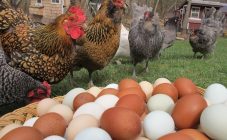Content:
Araucana is the name of a tribe of ancient Indians who lived in South America on the territory of modern Chile. It was from them that this amazing breed of chickens arose, laying multi-colored eggs with shells of greenish and blue hues.
Description of the breed
The breed is very ancient, the first mention of it dates back to 1526, when the Spaniards and Portuguese came to South America. It is clear that the Indians kept and bred this breed long before them, probably not even one millennium. Colored eggs were in demand among the Indians for performing magical rituals, and roosters took part in the main entertainment - cockfights. Therefore, hens with the most interesting and unusual color of eggs, and roosters with the least developed tail, preventing them from getting the palm tree in battle, were selected and set off for breeding. Long-term breeding work of illiterate Indians bore fruit, as a result of which modern people have a unique breed that is completely different from others.
More than three centuries passed before the chickens of the Araucan breed were exported to Europe, where they became popular and in demand. There is a legend about the special healing qualities and benefits inherent in the blue eggs of these chickens, although scientific studies have not confirmed this. The eggs of these hens are no different in composition from the eggs of other breeds.
Araucana chickens belong to rather rare, decorative egg breeds, have a unique and memorable appearance, attract attention with their sideburns and the absence of a tail. In some subspecies the tail is genetically absent, in others the tail is trimmed in accordance with breed standards.
There is an opinion that the color of the eggs went to the chickens of this breed from a very distant ancestor - a wild pheasant or other representative of the wild fauna, but this has not been confirmed by scientific research. However, scientists have accurately established that the female's oviduct contains biliverdin, a pigment that has the ability to stain eggs in these unusual colors.
By the way, the breed of chickens Araucan can make chicken eggs turn green! If you cross this breed with chickens laying eggs with brown shells, then the offspring will have green eggs, with a beautiful shade of young olives. When crossed with hens laying a simple white egg, in the next generation the eggs will have a bluish tint that will disappear after another generation.
What chickens lay blue eggs
The German standard for this breed is the original and was adopted in 1965. Chickens and roosters of the German breed are absolutely tailless, they do not have a tailbone. In 1975, the Americans bred a dwarf form of this breed and later entered the list of breeds. There are also English representatives of the breed with a good tail and crested head.
Araucana, the breed of chickens described in this article, has strict standards for appearance. This is how chickens laying blue, blue and green eggs should look like:
- the body is short with a strong build, tightly pressed wings, the shoulder girdle is wide, the chest is convex;
- the tail is completely absent in German standards;
- the neck is short, the head is small and neat;
- the comb is small, pod-shaped or pea-like, pink or red, the inversion of the comb is absolutely unacceptable;
- eyes are round, bright red and orange;
- the head is decorated with a beard or sideburns of long tufts of curled feathers;
- legs are proportional, strong appearance with blue-green pigmentation.
There are many colors - only 5 main ones (golden, blue, white, black and wild) and a dozen of their various combinations.
Disadvantages and signs of breed degeneration are:
- absence or very weak pigmentation of the egg shell;
- angular constitution of the bird, the so-called "loose figure";
- large or curled scallop;
- elongated or, conversely, short sideburn feathers and beards;
- the presence, depending on the origin of the breed, or the complete absence of a tail.
Characteristics and features of the breed
Araucana chickens that lay blue eggs have a number of undeniable advantages and advantages over other decorative breeds. These include:
- excellent adaptability to life in different climatic conditions;
- sharp jumps in the temperature of the continental climate do not affect egg production;
- good health inherent in the genes of the breed, as natural selection has been going on for hundreds of years;
- undemanding to living conditions, standard care is quite enough for chickens;
- early physical maturation,
- eggs of an unusual color will always be in high demand and will find their buyer;
- a good combination of two signs - exotic appearance and egg production.
Chickens that lay green eggs reach sexual maturity early and are able to produce up to 180 eggs of average weight up to 60 g in a year. Therefore, the breeding testicles will have to be incubated or placed on a brood hen of a different breed. Females have a calm and peaceful disposition.
Araucan chickens do not differ in any way from their counterparts of "noble" bloods either in appearance, or in behavior, or in caring for them. All breed characteristics appear with age. Determination of sex is also delayed, since sexual characteristics are vaguely expressed until a certain period of maturity, only after three months the braids break through in the males, making it possible to distinguish them from the chickens. Youngsters are very hardy compared to other breeds.
Roosters of this breed are brawlers and bully, real aggressors who do not tolerate rivals in the chicken coop, can even attack the owner if something is angry or seems suspicious.
The weight of a bird of this breed is small, adult chickens gain 1.5-2 kg of live weight, roosters a little more up to 2.5 kg. According to the reviews of lovers and breeders of this breed, the meat has good taste.
There are few disadvantages of the Araucana breed, but they are also quite serious:
- the German line of the breed has problems with the fertilization process, since due to the absence of the coccyx it is difficult for the cock to achieve full physical contact with the female;
- the pugnaciousness of the cockerels creates problems when raising young animals;
- the high cost of parent stock, associated with the exotic nature of the breed, and a high risk of running into an unscrupulous seller.
Despite this, the Araucan breed triumphantly marches through the Russian farmsteads, causing admiration for its appearance, egg production, unusual eggs, and unpretentious care. Allows lovers of the breed to build their own egg business, and small carcasses are in demand among lovers of exotic chicken.
Features of the breeding of this breed and care
Chickens of Araucana do not need any special conditions at all. Perfectly adapt to cold weather, summer heat and lingering bad weather. They feel good both in cages and on the walk, but keeping in cages in small families is considered the best.
Disease prevention boils down to regular treatments of the chicken coop, maintaining frequency and a balanced diet.
The poultry house should be equipped with a sufficient number of perches, where each bird will have at least 30 cm of nesting space, as well as a sufficient number of nests - one for each layer.
When walking, you need a canopy that protects from direct sunlight and rain, a sufficient number of drinkers and feeders. The walking area is fenced off with a high netting and is cleared of poisonous plants. Feeders and drinkers should be cleaned regularly and additionally as they become dirty.
The food should be balanced and the owner should make sure that the bird does not overeat, which leads to a decrease in egg production. It is best to take advantage of the plentiful feed for laying hens on the market today. Excessive nutrition can harm the body, and the bird will quickly become fat.
But the so-called "home food" is quite possible. Araucans, as an egg breed, need food with a high protein content, so you can add to the feed in reasonable quantities ground cake and beans, earthworms and boiled fish.
You also need to give crushed corn and oats, since birds of this particular breed need vegetable fats.
Feeding with minerals is especially important, the best of which are:
- finely crushed shell rock;
- fine screening of rounded river gravel;
- a piece of chalk;
- wood ash.
Mineral feeding is best placed in separate feeders.
An approximate diet for chickens of this breed can be found in the following table:
| 1 | bran | 10 g |
|---|---|---|
| 2 | whole grain | 50 g |
| 3 | crushed grain mixture | 50 g |
| 4 | cake | 10 g |
| 5 | bone flour | 5 g |
| 6 | vegetables | 40 g |
| 7 | hay or pine flour | 5 g |
| 8 | shell rock, chalk | 5 g |
It is worth remembering that chickens of the Araucana breed are excellent foragers and are able, when free-range, to almost completely satisfy their own need for food by pecking and eating grass and small animals - various insects, snails, slugs, worms.
Diseases and prevention
The bird of the Araucana breed has excellent high and persistent immunity to various diseases, fixed at the gene level. Therefore, the population of this bird only needs preventive measures if an outbreak of a certain disease of viral origin is observed in the region.
Much more harm to the health of a bird can be caused by parasites: external and internal fleas, helminths, ticks, chewing lice, which sometimes lead to the death of individual individuals.
To reduce the possibility of causing such harm to a minimum, it is worth following several rules of hygiene and sanitation:
- do not allow chickens to communicate with wild birds, since helminths are often acquired in this way, twice a year in spring and autumn, solder the livestock with anthelmintic drugs, strictly following the scheme;
- regularly change the litter to a fresh one, since fleas and ticks are bred primarily in a damp, dirty litter;
- thoroughly wash the dishes and drinkers at least once a day, this measure will reduce the likelihood of infection with helminths;
- periodically disinfect the chicken coop and perches, ash baths for bathing and update their contents;
- if possible, do not allow unauthorized persons who can introduce infection or parasites into the chicken coop on clothes and shoes into the places where the bird is kept.
Summing up, it can be noted that chickens of the Araucana breed are beautiful and unusual in appearance, have a good constitution and health, they lay eggs with unusual shells in large enough quantities, the meat is tasty, the carcasses are small. They are hardy and adapted to life in different climatic zones, young animals are distinguished by high vitality, feeding and maintenance are standard and does not require much trouble. They will decorate the courtyard and bring a touch of exoticism.But the breed also has disadvantages: roosters are pugnacious and touchy, females do not hatch eggs independently, eggs are often unfertilized. For some, they may seem insignificant, in any case, the choice remains with the poultry farmer.
